Sainsbury's Financial Health: A Comparative Analysis with Morrisons
VerifiedAdded on 2023/06/17
|13
|1177
|138
Report
AI Summary
This report provides a comprehensive financial analysis of J. Sainsbury plc, a leading UK supermarket, comparing its performance against its major competitor, Morrisons. The analysis includes a brief history of Sainsbury's, an examination of its financial performance using profitability, liquidity, gearing, and efficiency ratios, and a comparative analysis with Morrisons. The report highlights Sainsbury's operational inefficiencies compared to Morrisons and offers recommendations for improvement. It also delves into investment appraisal techniques, including payback period, accounting rate of return (ARR), and net present value (NPV), with a critical analysis of their advantages and shortcomings. The conclusion emphasizes the importance of financial management in strategic decision-making for businesses like Sainsbury's.

Financial
Management
Management
Paraphrase This Document
Need a fresh take? Get an instant paraphrase of this document with our AI Paraphraser
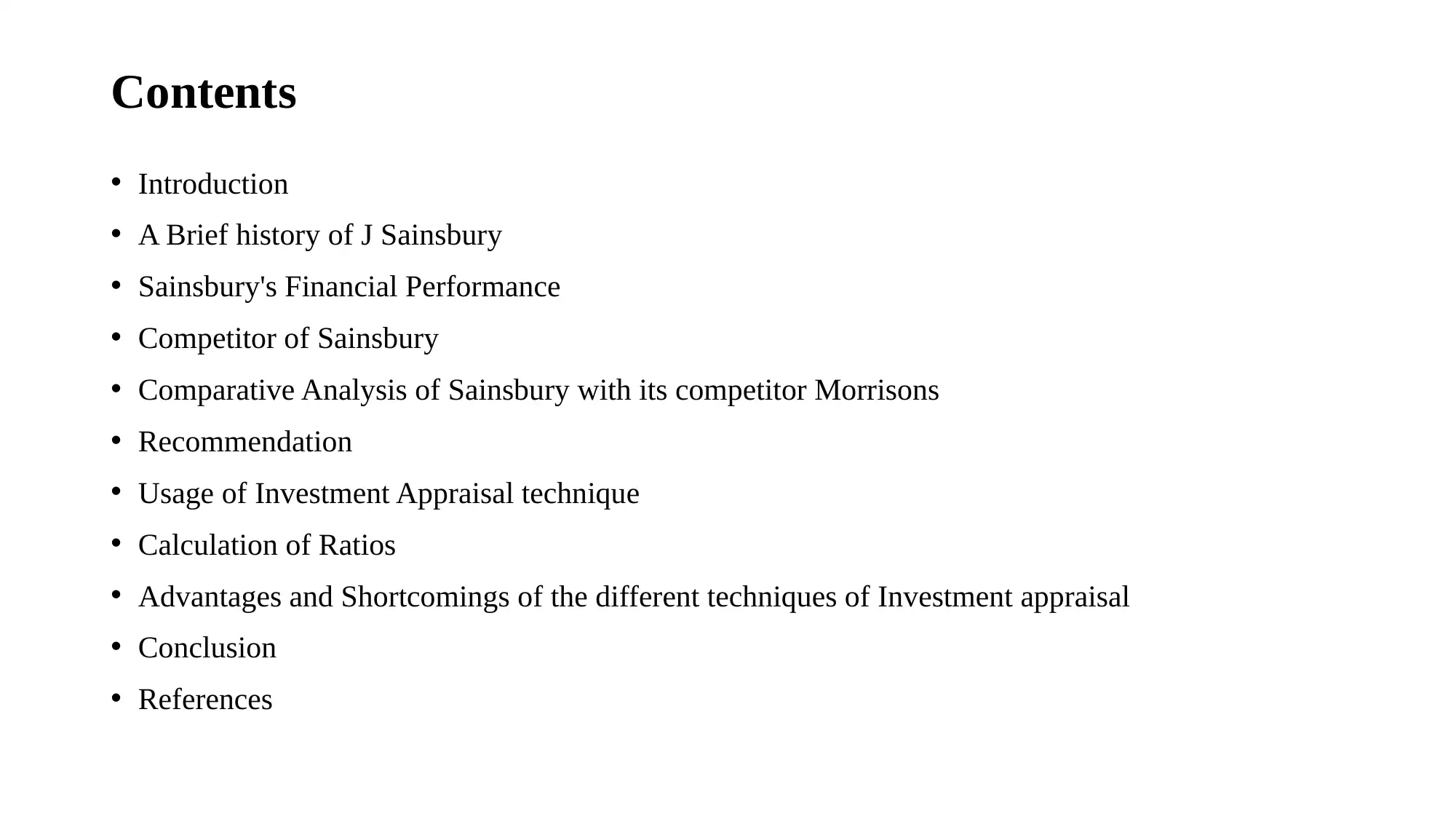
Contents
• Introduction
• A Brief history of J Sainsbury
• Sainsbury's Financial Performance
• Competitor of Sainsbury
• Comparative Analysis of Sainsbury with its competitor Morrisons
• Recommendation
• Usage of Investment Appraisal technique
• Calculation of Ratios
• Advantages and Shortcomings of the different techniques of Investment appraisal
• Conclusion
• References
• Introduction
• A Brief history of J Sainsbury
• Sainsbury's Financial Performance
• Competitor of Sainsbury
• Comparative Analysis of Sainsbury with its competitor Morrisons
• Recommendation
• Usage of Investment Appraisal technique
• Calculation of Ratios
• Advantages and Shortcomings of the different techniques of Investment appraisal
• Conclusion
• References
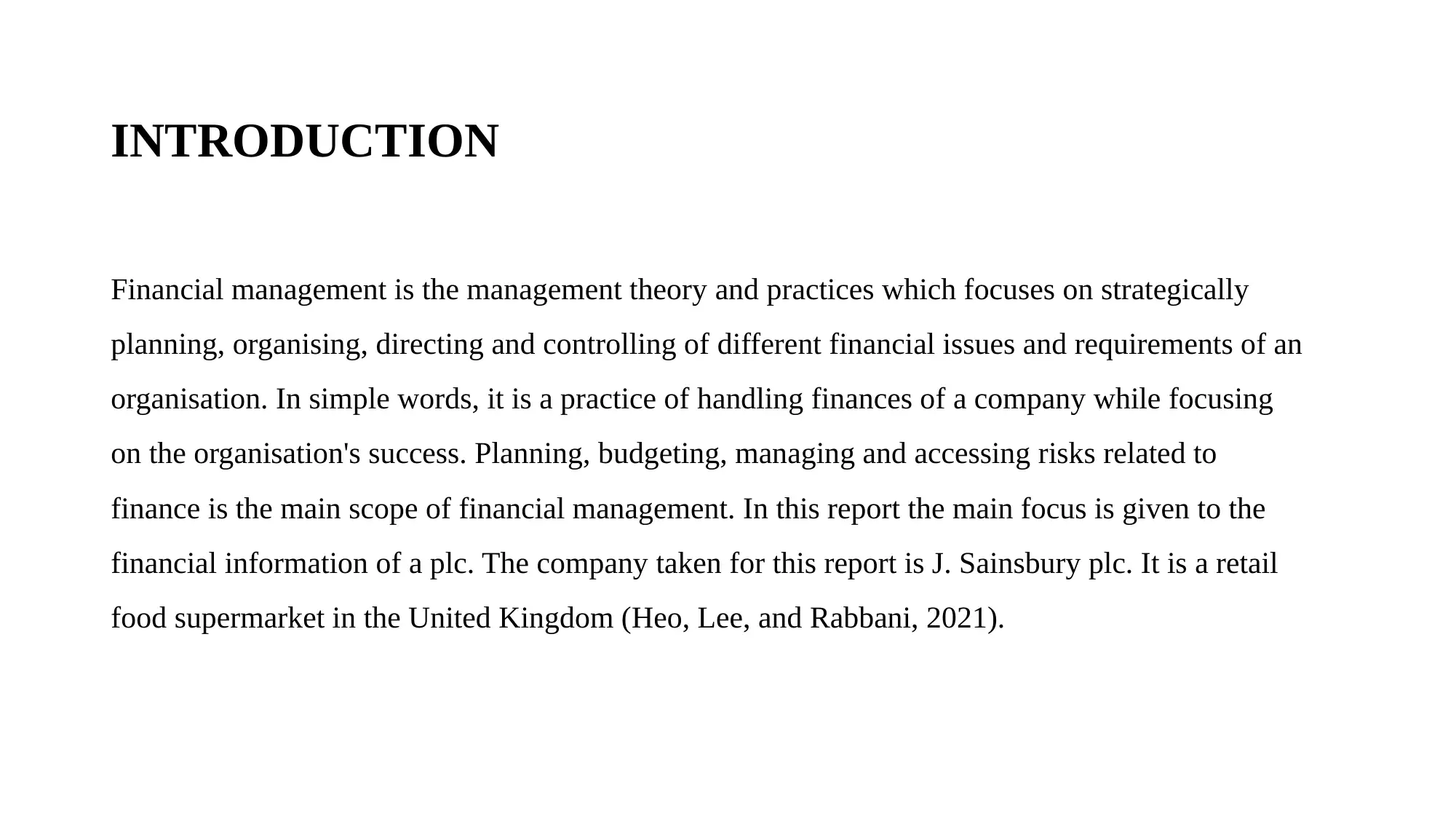
INTRODUCTION
Financial management is the management theory and practices which focuses on strategically
planning, organising, directing and controlling of different financial issues and requirements of an
organisation. In simple words, it is a practice of handling finances of a company while focusing
on the organisation's success. Planning, budgeting, managing and accessing risks related to
finance is the main scope of financial management. In this report the main focus is given to the
financial information of a plc. The company taken for this report is J. Sainsbury plc. It is a retail
food supermarket in the United Kingdom (Heo, Lee, and Rabbani, 2021).
Financial management is the management theory and practices which focuses on strategically
planning, organising, directing and controlling of different financial issues and requirements of an
organisation. In simple words, it is a practice of handling finances of a company while focusing
on the organisation's success. Planning, budgeting, managing and accessing risks related to
finance is the main scope of financial management. In this report the main focus is given to the
financial information of a plc. The company taken for this report is J. Sainsbury plc. It is a retail
food supermarket in the United Kingdom (Heo, Lee, and Rabbani, 2021).
⊘ This is a preview!⊘
Do you want full access?
Subscribe today to unlock all pages.

Trusted by 1+ million students worldwide
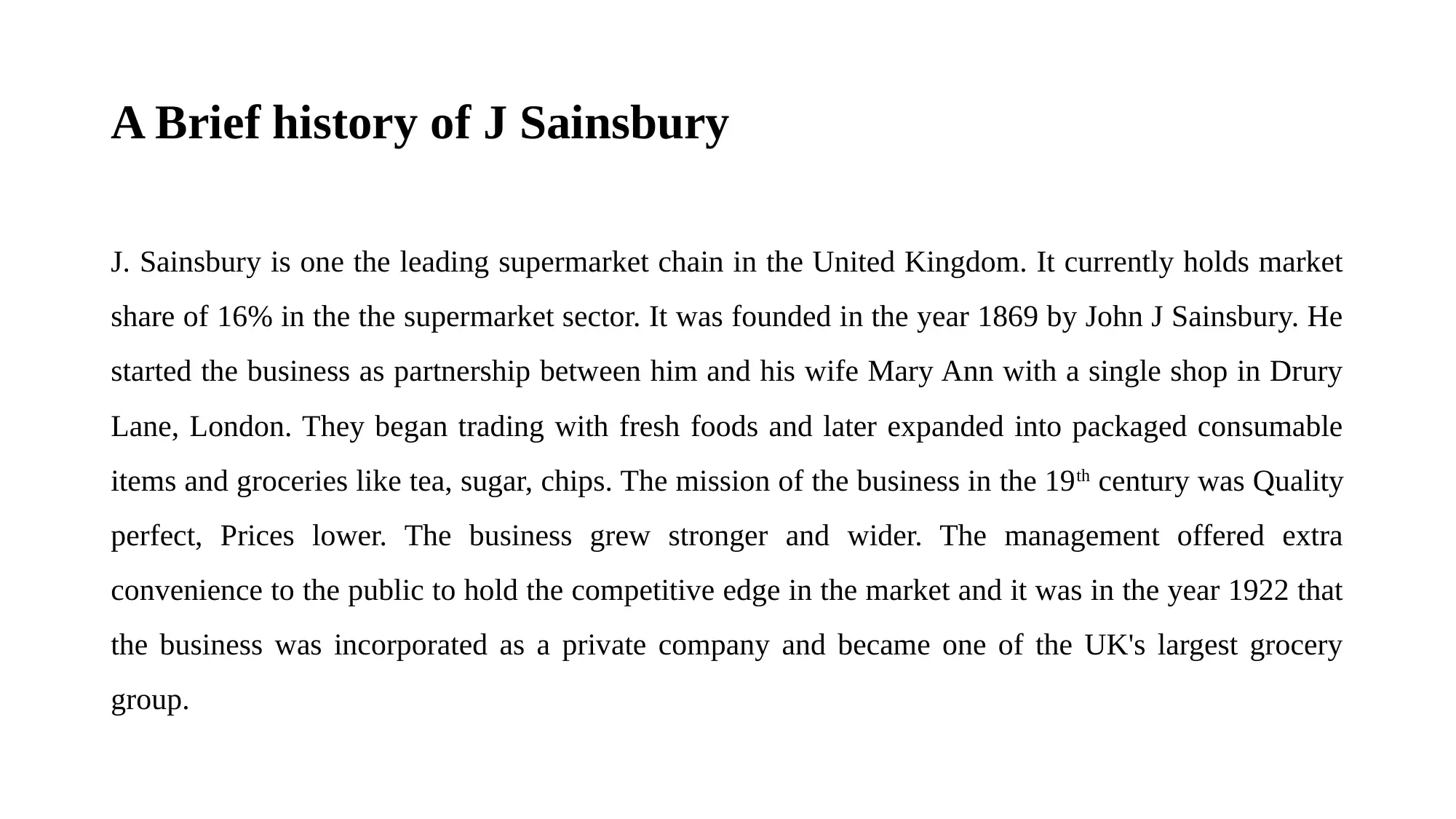
A Brief history of J Sainsbury
J. Sainsbury is one the leading supermarket chain in the United Kingdom. It currently holds market
share of 16% in the the supermarket sector. It was founded in the year 1869 by John J Sainsbury. He
started the business as partnership between him and his wife Mary Ann with a single shop in Drury
Lane, London. They began trading with fresh foods and later expanded into packaged consumable
items and groceries like tea, sugar, chips. The mission of the business in the 19th century was Quality
perfect, Prices lower. The business grew stronger and wider. The management offered extra
convenience to the public to hold the competitive edge in the market and it was in the year 1922 that
the business was incorporated as a private company and became one of the UK's largest grocery
group.
J. Sainsbury is one the leading supermarket chain in the United Kingdom. It currently holds market
share of 16% in the the supermarket sector. It was founded in the year 1869 by John J Sainsbury. He
started the business as partnership between him and his wife Mary Ann with a single shop in Drury
Lane, London. They began trading with fresh foods and later expanded into packaged consumable
items and groceries like tea, sugar, chips. The mission of the business in the 19th century was Quality
perfect, Prices lower. The business grew stronger and wider. The management offered extra
convenience to the public to hold the competitive edge in the market and it was in the year 1922 that
the business was incorporated as a private company and became one of the UK's largest grocery
group.
Paraphrase This Document
Need a fresh take? Get an instant paraphrase of this document with our AI Paraphraser
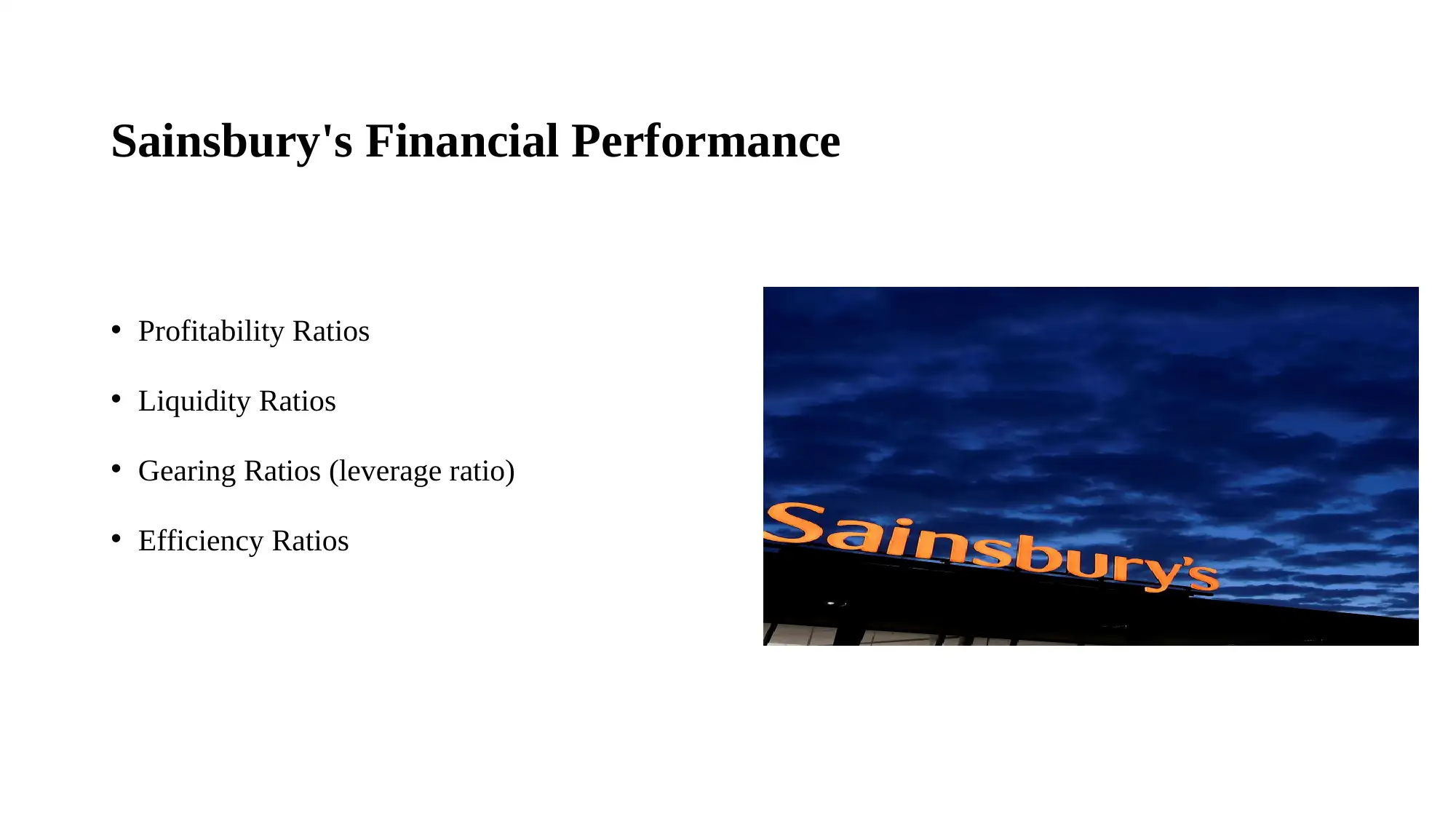
Sainsbury's Financial Performance
• Profitability Ratios
• Liquidity Ratios
• Gearing Ratios (leverage ratio)
• Efficiency Ratios
• Profitability Ratios
• Liquidity Ratios
• Gearing Ratios (leverage ratio)
• Efficiency Ratios
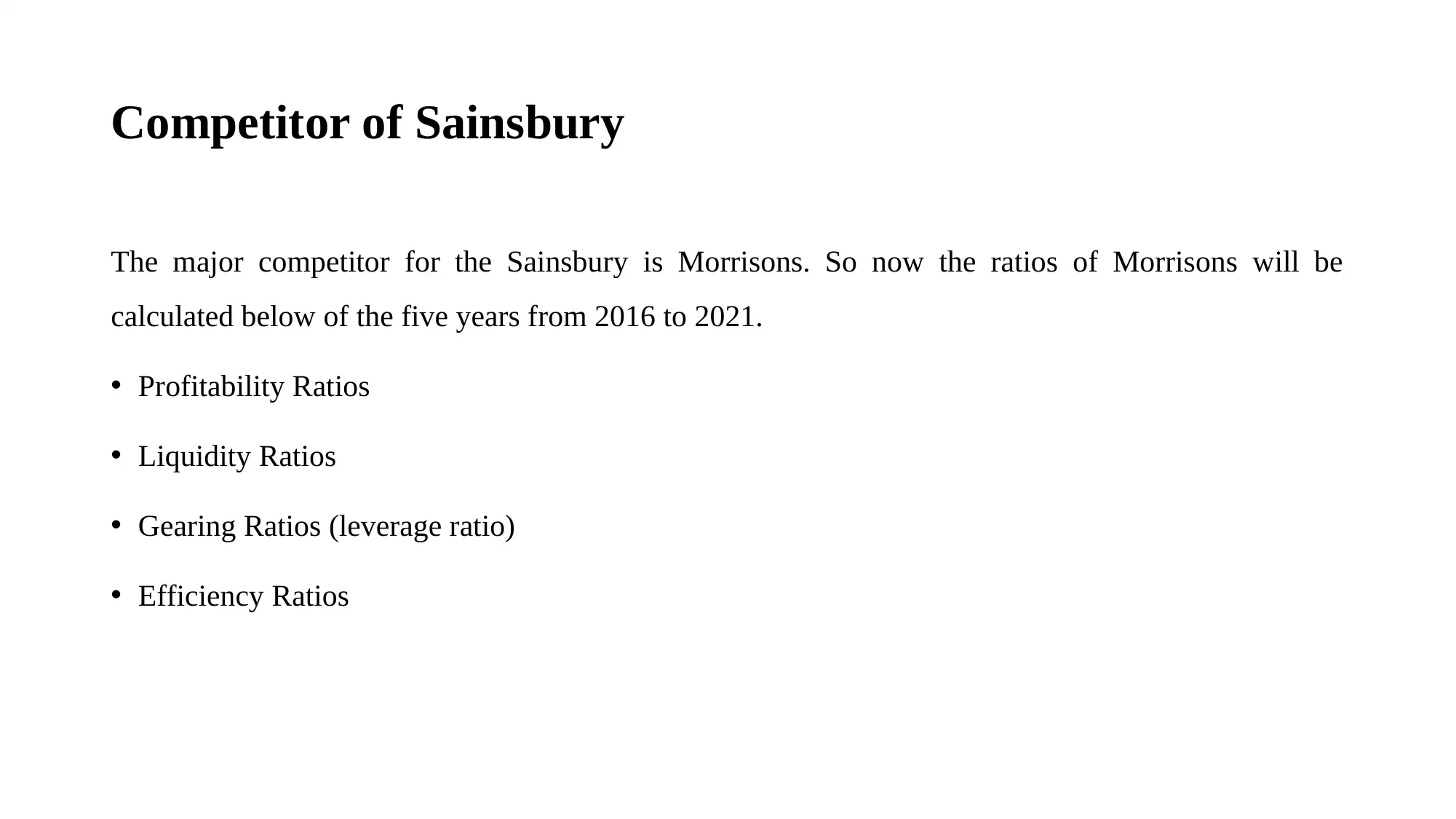
Competitor of Sainsbury
The major competitor for the Sainsbury is Morrisons. So now the ratios of Morrisons will be
calculated below of the five years from 2016 to 2021.
• Profitability Ratios
• Liquidity Ratios
• Gearing Ratios (leverage ratio)
• Efficiency Ratios
The major competitor for the Sainsbury is Morrisons. So now the ratios of Morrisons will be
calculated below of the five years from 2016 to 2021.
• Profitability Ratios
• Liquidity Ratios
• Gearing Ratios (leverage ratio)
• Efficiency Ratios
⊘ This is a preview!⊘
Do you want full access?
Subscribe today to unlock all pages.

Trusted by 1+ million students worldwide
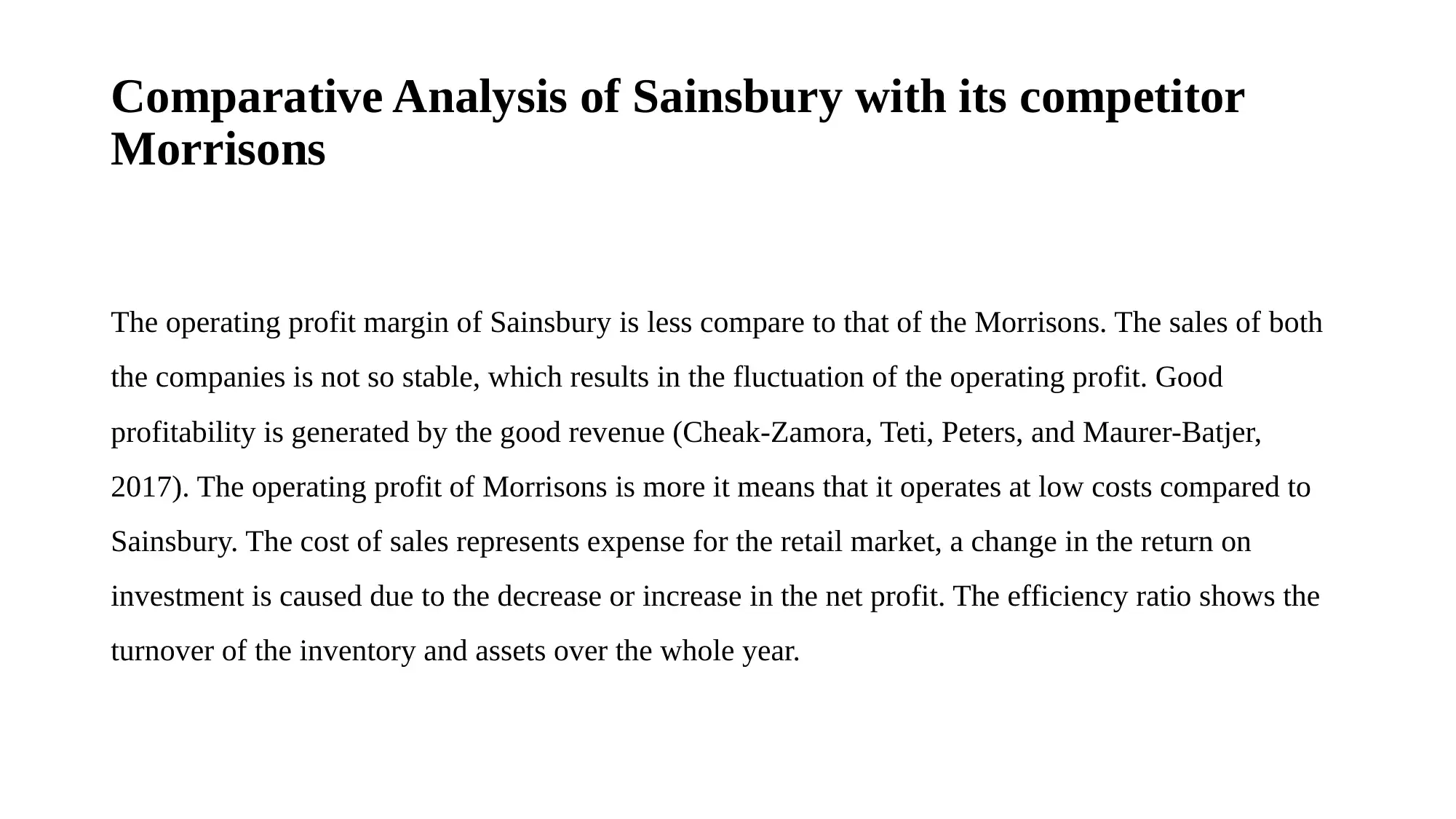
Comparative Analysis of Sainsbury with its competitor
Morrisons
The operating profit margin of Sainsbury is less compare to that of the Morrisons. The sales of both
the companies is not so stable, which results in the fluctuation of the operating profit. Good
profitability is generated by the good revenue (Cheak-Zamora, Teti, Peters, and Maurer-Batjer,
2017). The operating profit of Morrisons is more it means that it operates at low costs compared to
Sainsbury. The cost of sales represents expense for the retail market, a change in the return on
investment is caused due to the decrease or increase in the net profit. The efficiency ratio shows the
turnover of the inventory and assets over the whole year.
Morrisons
The operating profit margin of Sainsbury is less compare to that of the Morrisons. The sales of both
the companies is not so stable, which results in the fluctuation of the operating profit. Good
profitability is generated by the good revenue (Cheak-Zamora, Teti, Peters, and Maurer-Batjer,
2017). The operating profit of Morrisons is more it means that it operates at low costs compared to
Sainsbury. The cost of sales represents expense for the retail market, a change in the return on
investment is caused due to the decrease or increase in the net profit. The efficiency ratio shows the
turnover of the inventory and assets over the whole year.
Paraphrase This Document
Need a fresh take? Get an instant paraphrase of this document with our AI Paraphraser
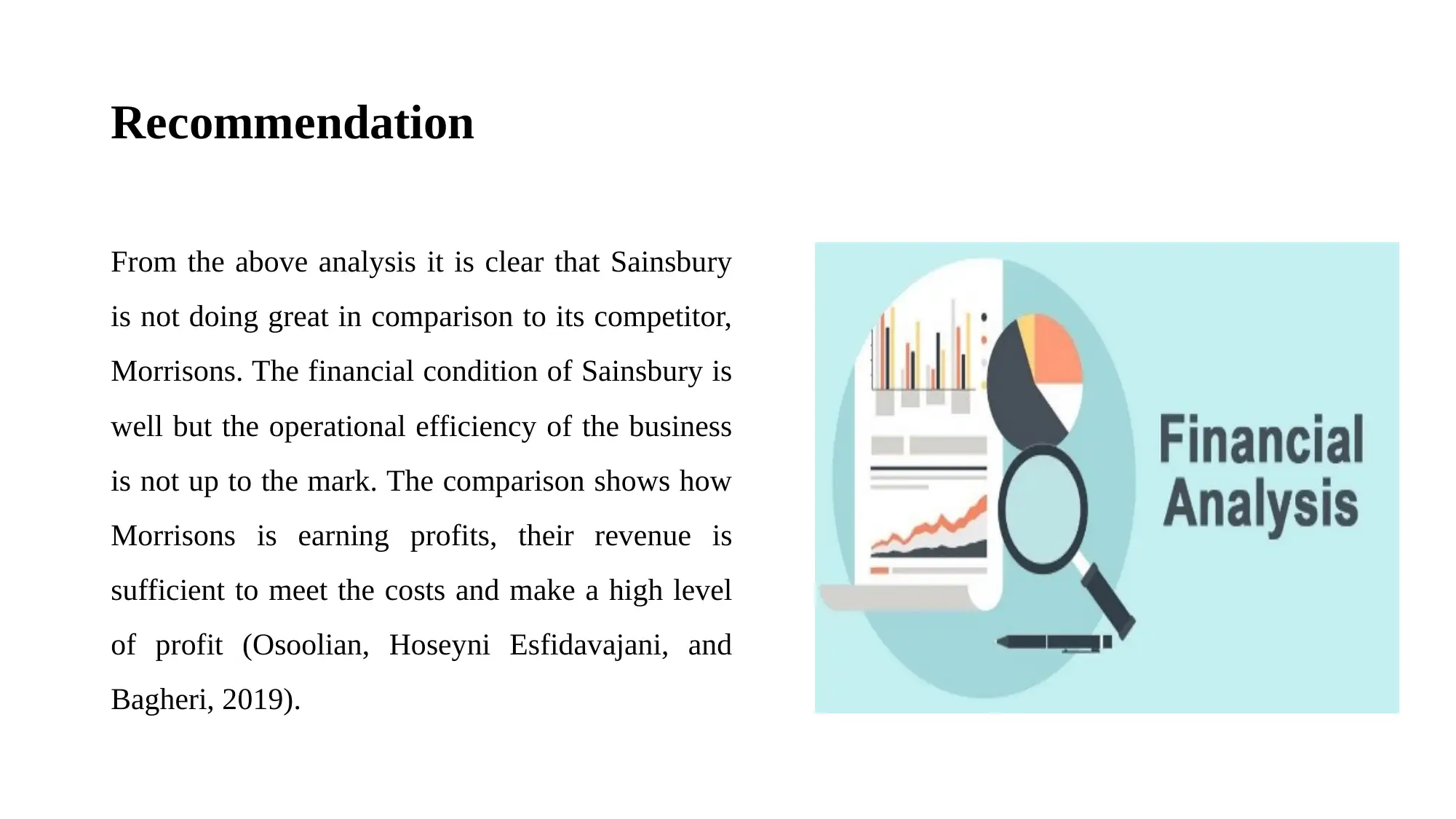
Recommendation
From the above analysis it is clear that Sainsbury
is not doing great in comparison to its competitor,
Morrisons. The financial condition of Sainsbury is
well but the operational efficiency of the business
is not up to the mark. The comparison shows how
Morrisons is earning profits, their revenue is
sufficient to meet the costs and make a high level
of profit (Osoolian, Hoseyni Esfidavajani, and
Bagheri, 2019).
From the above analysis it is clear that Sainsbury
is not doing great in comparison to its competitor,
Morrisons. The financial condition of Sainsbury is
well but the operational efficiency of the business
is not up to the mark. The comparison shows how
Morrisons is earning profits, their revenue is
sufficient to meet the costs and make a high level
of profit (Osoolian, Hoseyni Esfidavajani, and
Bagheri, 2019).
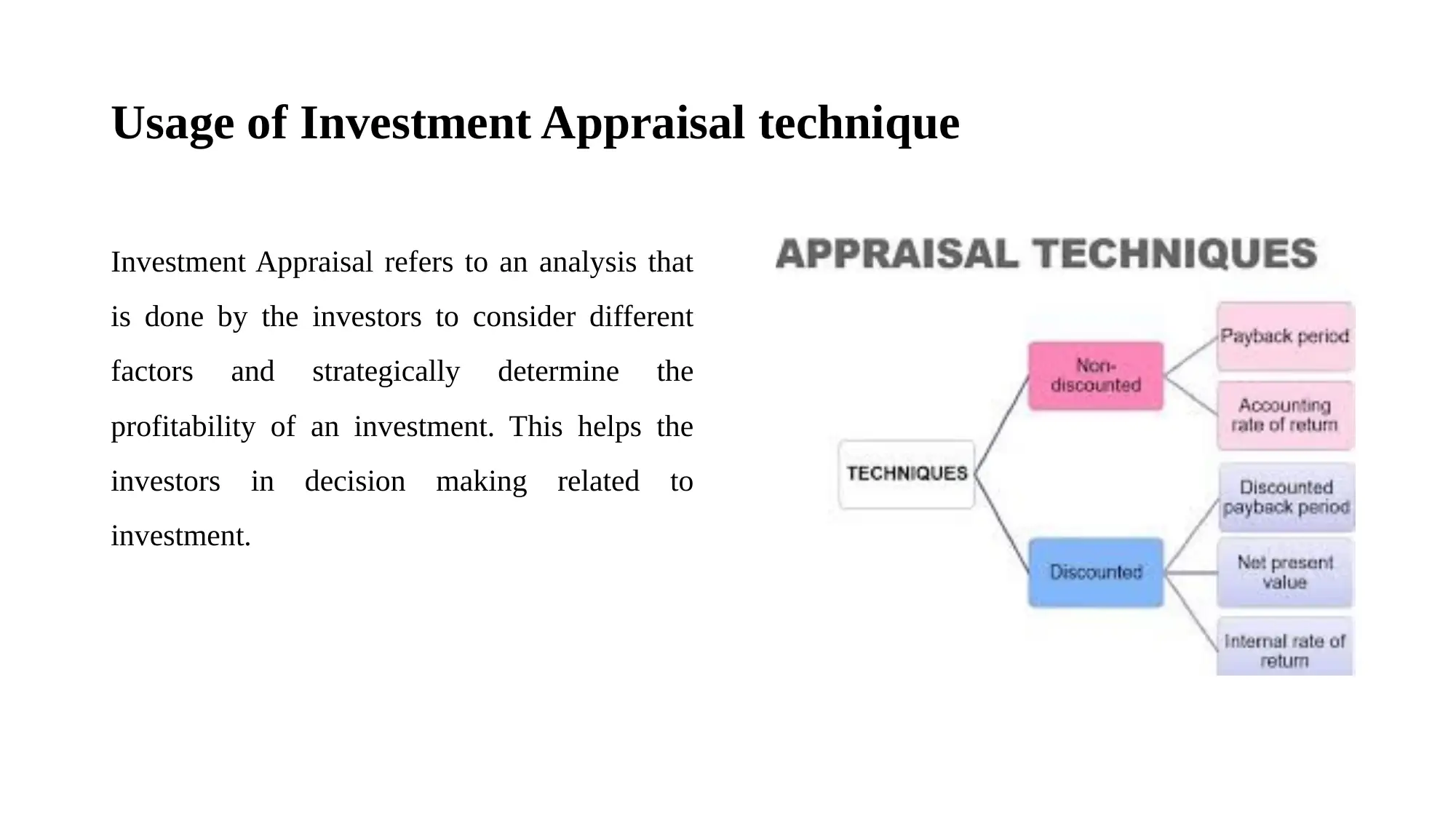
Usage of Investment Appraisal technique
Investment Appraisal refers to an analysis that
is done by the investors to consider different
factors and strategically determine the
profitability of an investment. This helps the
investors in decision making related to
investment.
Investment Appraisal refers to an analysis that
is done by the investors to consider different
factors and strategically determine the
profitability of an investment. This helps the
investors in decision making related to
investment.
⊘ This is a preview!⊘
Do you want full access?
Subscribe today to unlock all pages.

Trusted by 1+ million students worldwide
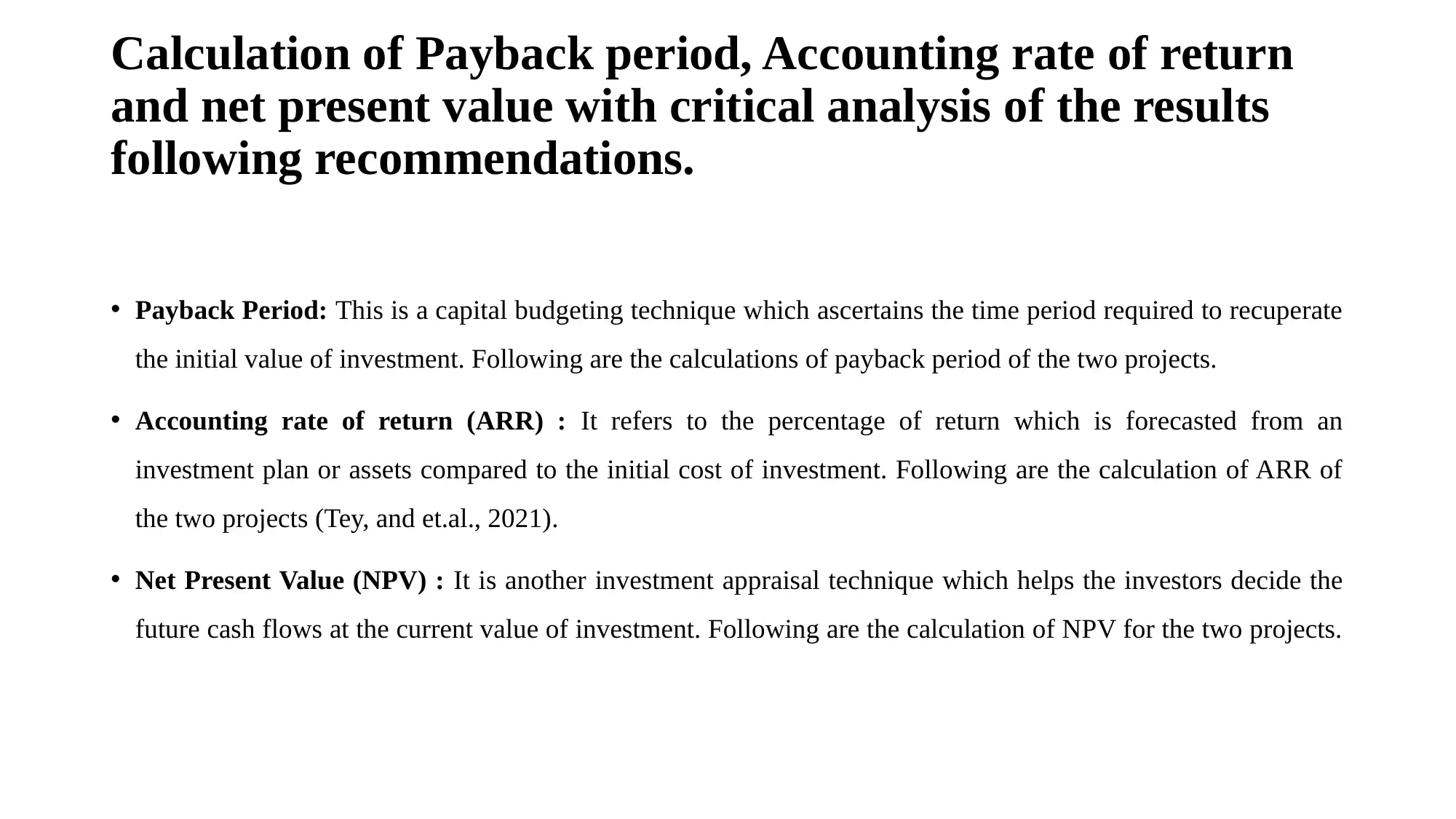
Calculation of Payback period, Accounting rate of return
and net present value with critical analysis of the results
following recommendations.
• Payback Period: This is a capital budgeting technique which ascertains the time period required to recuperate
the initial value of investment. Following are the calculations of payback period of the two projects.
• Accounting rate of return (ARR) : It refers to the percentage of return which is forecasted from an
investment plan or assets compared to the initial cost of investment. Following are the calculation of ARR of
the two projects (Tey, and et.al., 2021).
• Net Present Value (NPV) : It is another investment appraisal technique which helps the investors decide the
future cash flows at the current value of investment. Following are the calculation of NPV for the two projects.
and net present value with critical analysis of the results
following recommendations.
• Payback Period: This is a capital budgeting technique which ascertains the time period required to recuperate
the initial value of investment. Following are the calculations of payback period of the two projects.
• Accounting rate of return (ARR) : It refers to the percentage of return which is forecasted from an
investment plan or assets compared to the initial cost of investment. Following are the calculation of ARR of
the two projects (Tey, and et.al., 2021).
• Net Present Value (NPV) : It is another investment appraisal technique which helps the investors decide the
future cash flows at the current value of investment. Following are the calculation of NPV for the two projects.
Paraphrase This Document
Need a fresh take? Get an instant paraphrase of this document with our AI Paraphraser
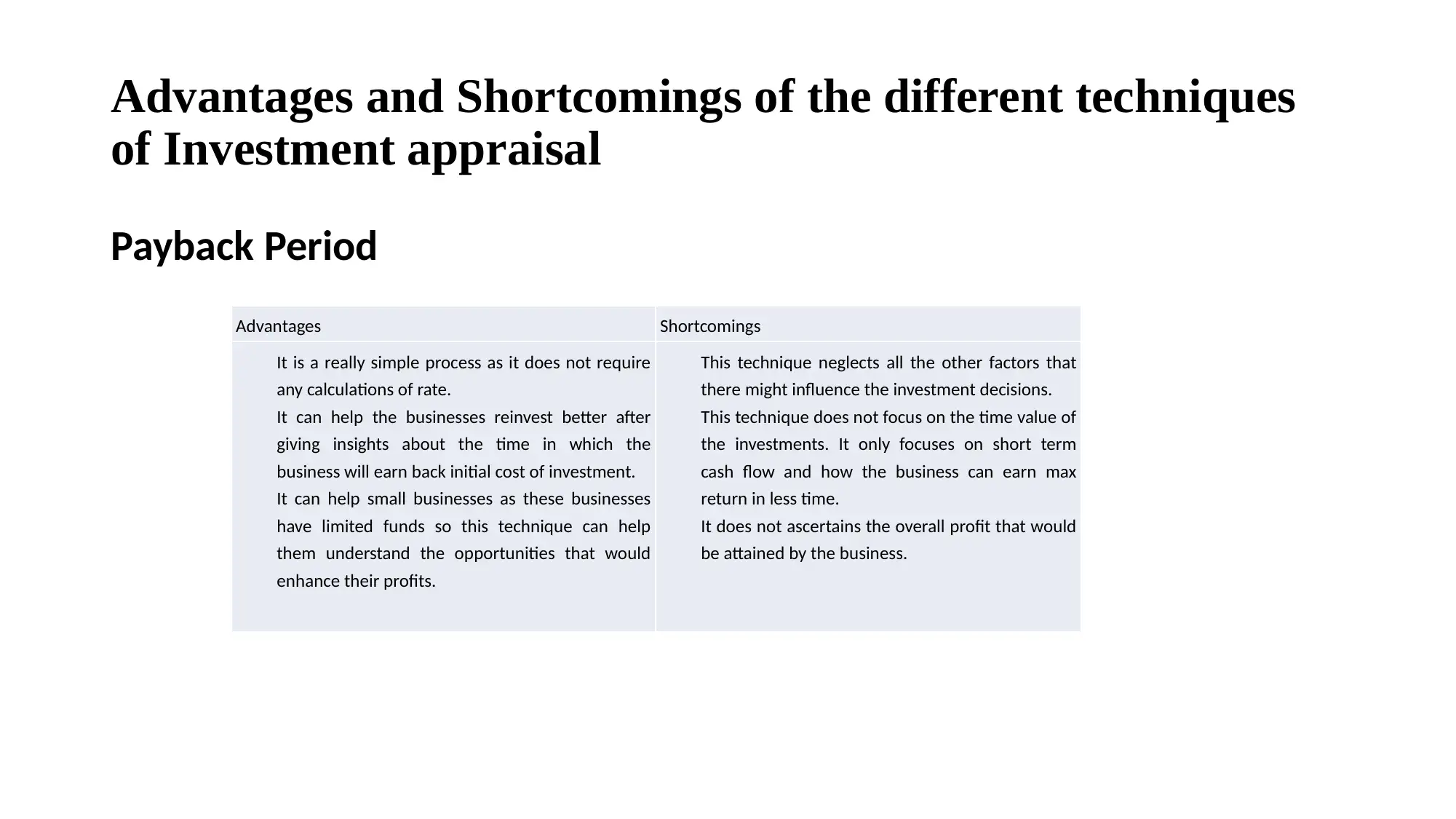
Advantages and Shortcomings of the different techniques
of Investment appraisal
Payback Period
Advantages Shortcomings
It is a really simple process as it does not require
any calculations of rate.
It can help the businesses reinvest better after
giving insights about the time in which the
business will earn back initial cost of investment.
It can help small businesses as these businesses
have limited funds so this technique can help
them understand the opportunities that would
enhance their profits.
This technique neglects all the other factors that
there might influence the investment decisions.
This technique does not focus on the time value of
the investments. It only focuses on short term
cash flow and how the business can earn max
return in less time.
It does not ascertains the overall profit that would
be attained by the business.
of Investment appraisal
Payback Period
Advantages Shortcomings
It is a really simple process as it does not require
any calculations of rate.
It can help the businesses reinvest better after
giving insights about the time in which the
business will earn back initial cost of investment.
It can help small businesses as these businesses
have limited funds so this technique can help
them understand the opportunities that would
enhance their profits.
This technique neglects all the other factors that
there might influence the investment decisions.
This technique does not focus on the time value of
the investments. It only focuses on short term
cash flow and how the business can earn max
return in less time.
It does not ascertains the overall profit that would
be attained by the business.
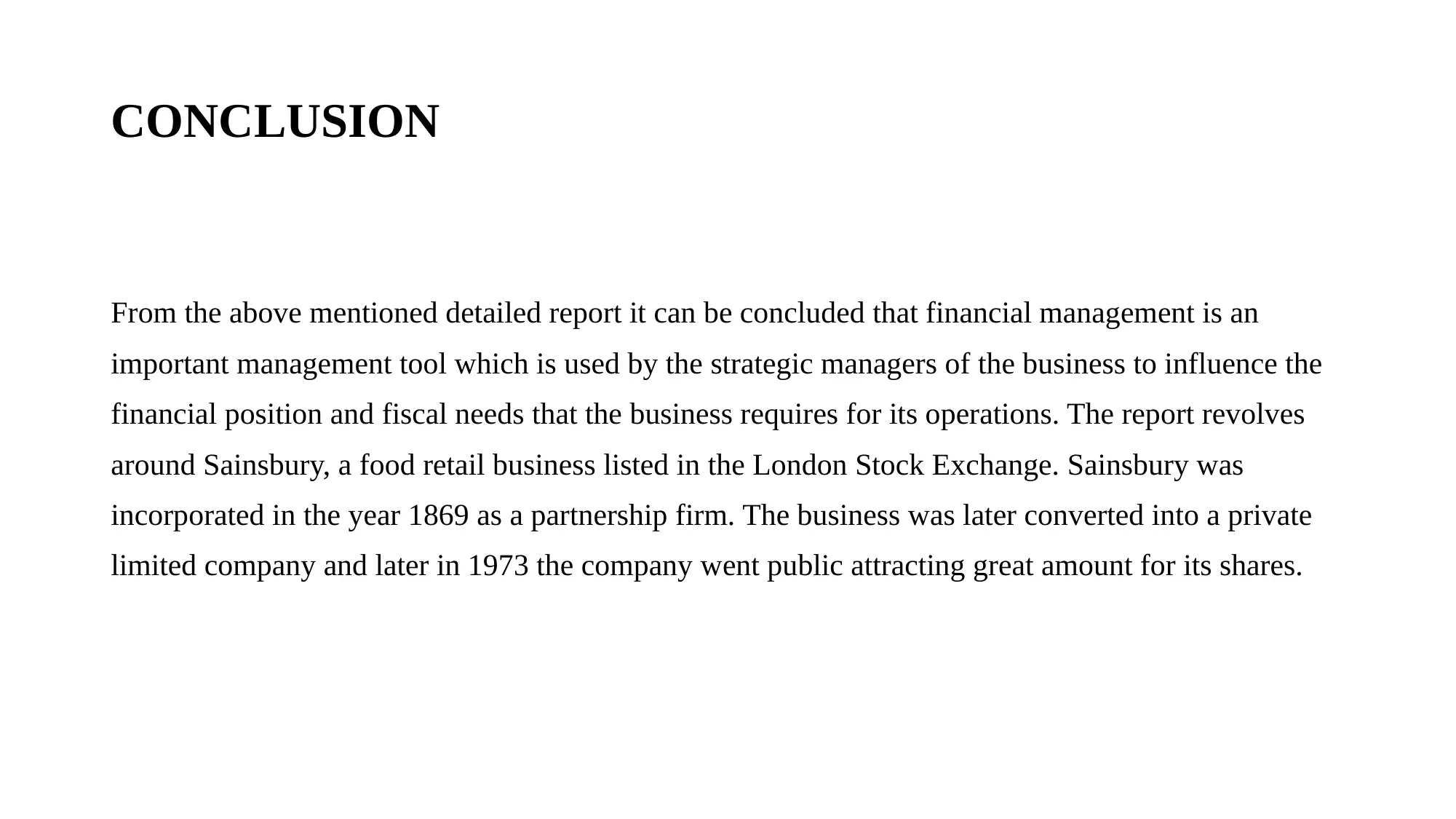
CONCLUSION
From the above mentioned detailed report it can be concluded that financial management is an
important management tool which is used by the strategic managers of the business to influence the
financial position and fiscal needs that the business requires for its operations. The report revolves
around Sainsbury, a food retail business listed in the London Stock Exchange. Sainsbury was
incorporated in the year 1869 as a partnership firm. The business was later converted into a private
limited company and later in 1973 the company went public attracting great amount for its shares.
From the above mentioned detailed report it can be concluded that financial management is an
important management tool which is used by the strategic managers of the business to influence the
financial position and fiscal needs that the business requires for its operations. The report revolves
around Sainsbury, a food retail business listed in the London Stock Exchange. Sainsbury was
incorporated in the year 1869 as a partnership firm. The business was later converted into a private
limited company and later in 1973 the company went public attracting great amount for its shares.
⊘ This is a preview!⊘
Do you want full access?
Subscribe today to unlock all pages.

Trusted by 1+ million students worldwide
1 out of 13
Related Documents
Your All-in-One AI-Powered Toolkit for Academic Success.
+13062052269
info@desklib.com
Available 24*7 on WhatsApp / Email
![[object Object]](/_next/static/media/star-bottom.7253800d.svg)
Unlock your academic potential
Copyright © 2020–2025 A2Z Services. All Rights Reserved. Developed and managed by ZUCOL.




